Some summer birds and mammals from Calgary, taken in late June 2015. All photos by Tony LePrieur.
 American Coot chicks and adult.
American Coot chicks and adult.
Posted by Bob Lefebvre
I recently found a Red Fox den in the city of Calgary. There are five kits, and although I didn’t have my camera when I found them, I returned later and was able to get a couple of photos before the adult spotted me. The den is in a very exposed and quite busy spot, so I didn’t want to stay and disturb them.
 Adult Red Fox with one kit at den.
Adult Red Fox with one kit at den.
Posted by Dan Arndt
Our last outing with the Friends of Fish Creek Winter birding course on March 29 was to South Glenmore Park in hopes of seeing some migrant swans, some early sparrows, and who knows what else! We did have a few good sightings, and it rounded out the course perfectly in my opinion!
It seems like not a week goes by where we haven’t been seeing at least one Northern Shrike on our walks, and soon after we started, we heard a commotion in the spruce trees above us and spotted not one, but two of them up there! One appeared to be an adult, while the second, which I was able to get a photo of, looked a little duller, which would indicate that it’s likely an immature bird.
We had a good number of Trumpeter Swans fly by us heading to the open water on the west end of the Glenmore Reservoir, but it was nice to have a pair fly by a bit closer to us, trumpeting away as they flew!
While the rest of the reservoir was still frozen over, we didn’t really get too much of a look at the birds on the far west end, so we headed up onto another parallel pathway to feed some birds, and we did also hear the beautiful song of the Golden-crowned Kinglet, the first I’d heard since January. There seemed to be far fewer of them around this year than in past years, so it was nice to see them again up close!
We also put some seeds out for the chickadees and nuthatches, and had a few Black-capped Chickadees and at least three Red-breasted Nuthatches come in to stock up their supplies.
So after a relatively quiet morning with very few birds up close to us, it was nice to almost literally stumble over this Snowshoe Hare. Unlike the one we found a few weeks earlier, this one was beginning the transition out of its winter coat and into the more typical brown summer coloration. Even still, it was still difficult for many of our group to see unless it was directly pointed out to them.
In addition to the newly arrived kinglets, swans, and gulls of the past few weeks, we also found a number of aspen budding out in their fresh catkins, better known of course as pussy willows. One of the signs of spring that’s almost as reliable as the first Red-winged Blackbirds and Red-tailed Hawks!
Our very last sighting was a trio of Blue Jays, right in the exact same spot where a few other groups had seen them earlier in the week. It’s quite possible that there’s a nest down below the ridge at this point, but with how dense the willow and aspens are in that area, it’d be nearly impossible to find it.
And with that, our winter birding course comes to an end. In fact, yesterday, April 4 was our first outing for the spring course, so get ready for migration to ramp up over the next few weeks and the colors to really start to brighten up!
Have a great week, and good birding.
Update: For the first time, the group (45 people) did not get to see the Flying Squirrels on March 20, and we didn’t hear any Saw-whet Owls either. It was a very humid, misty, foggy night with the temperature near freezing, so that may have had something to do with it.
—————-
Posted by Bob Lefebvre, all photos by Dan Arndt
Next Friday, March 20, Dan Arndt and I will lead the annual Nature Calgary outing to the Weaselhead to see Northern Flying Squirrels. This is a popular outing, likely because people don’t often get an opportunity to see these animals. It can also be challenging, because we often have to wait for over an hour in the cold and dark before the squirrels make an appearance. But if you are patient there is a very good chance you will see these elusive creatures. In over a dozen trips to see them, I think we have only missed them twice. We generally get to see them glide, and we see them up close at a particular bird feeder which they apparently visit each night, looking for seeds that the birds have overlooked (we re-stock the feeder just before the field trip so that they will stay and feed for a while).
For birders, we often hear Northern Saw-whet Owls and sometimes other species.
If you want to join us, we meet at the north Weaselhead parking lot, 37 Street and 66 Avenue SW, at 8 pm, Friday March 20. Here is the information about the field trip on the Nature Calgary site.
Many people are not even aware that we have flying squirrels in Calgary (I wasn’t until we saw one at this location in 2008), but they are in fact common throughout the boreal forest, and probably in the city as well. Because they are nocturnal they aren’t often seen.
Most of the photos below were taken last spring on one of our scouting trips. We set up in the bush within ten feet of the feeder, and were able to get great looks. All photos by Dan Arndt, March 26, 2014, except as indicated.
Below is a Northern Flying Squirrel approaching the feeder after landing higher in the tree. You can see the wide flattened tail which acts as a rudder and as an additional gliding surface. (This photo taken March 23, 2012, by Dan Arndt.)
The next shot shows the large eyes and the furred flap of skin with a dark edge between the wrist and ankle. This is called the patagium, and it forms the main gliding surface when the legs are extended. (This photo was taken by Dan Arndt on March 17, 2012.)
Below, a Northern Flying Squirrel at the feeder:
Below, Feeding. Note the patagium extending from the forward part of the wrist. There is a cartilaginous rod several centimeters long (inside the patagium) jutting out from the wrist, which helps to support the skin.
The remaining photos were actually taken before the 2014 flash photos above. We use a red light to locate the squirrels. Apparently they can’t see these wavelengths, so it doesn’t disturb them, and we can see them approach. Once they are feeding they settle in and are more tolerant, and do not usually leave even when you use flash photography or approach them more closely.
Here is another post that Dan wrote after our 2012 field trip: Barred Owls and Flying Squirrels.
More facts about the Northern Flying Squirrel:
Join us next Friday for a chance to see these amazing animals!
My main source for information on Northern Flying Squirrels was the excellent book The Natural History of Canadian Mammals by Donna Naughton.
Posted by Dan Arndt
My last two outings with the Friends of Fish Creek Spring Birding course were at Carburn Park, both on Thursday, April 17 and Sunday, April 20. Both days had their high points, and so I’ll be mixing and matching photos from each of those days here.
While each day we did the route a little differently, the best birds were always in the same spots. On Sunday, we headed down to the Eric Harvie Bridge then walked back along the river with the sun behind us. While there weren’t too many birds near the bridge itself, as we moved northward we found our first Common Goldeneyes, an American Beaver, and shortly thereafter, a lone Muskrat above the beaver’s dam!
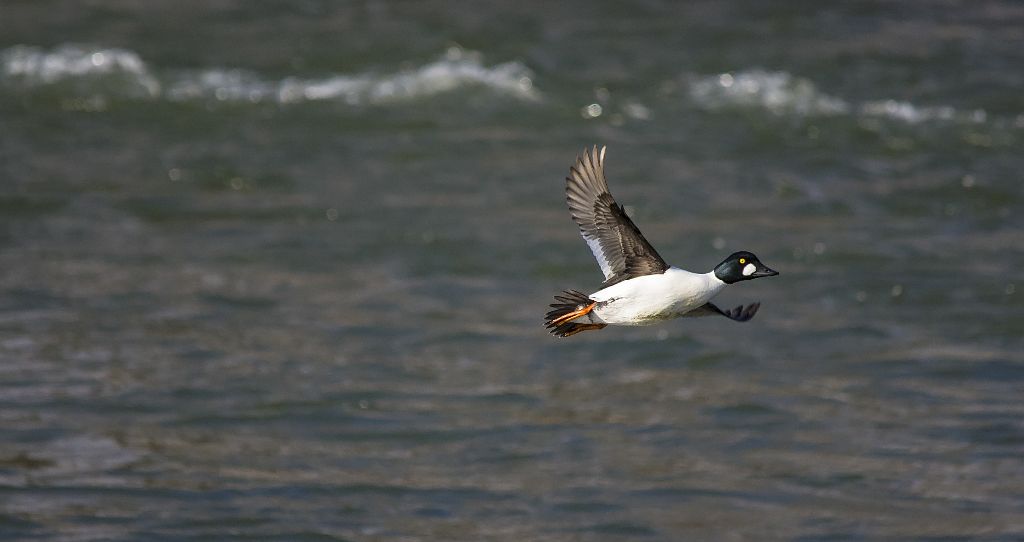
Common Goldeneye
Carburn Park – April 20, 2014
Pentax K-5 + Sigma 150-500@500mm
1/2000sec., ƒ/6.3, ISO 800
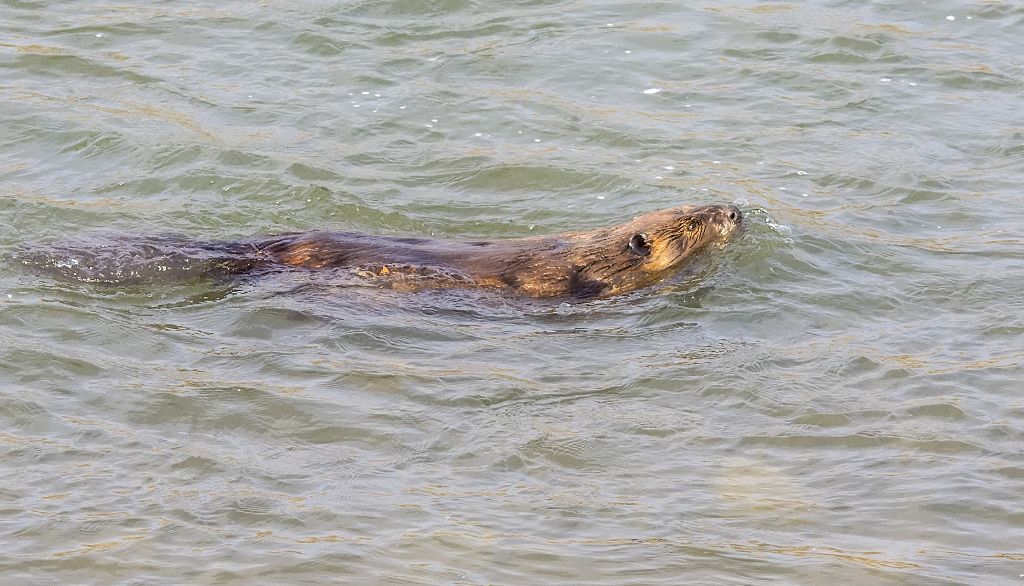
American Beaver
Carburn Park – April 20, 2014
Pentax K-5 + Sigma 150-500@200mm
1/1000sec., ƒ/6.3, ISO 2000
We were also treated to some vigorously displaying Downy Woodpeckers, chasing each other up and down from tree to tree. These two especially were really going at it!
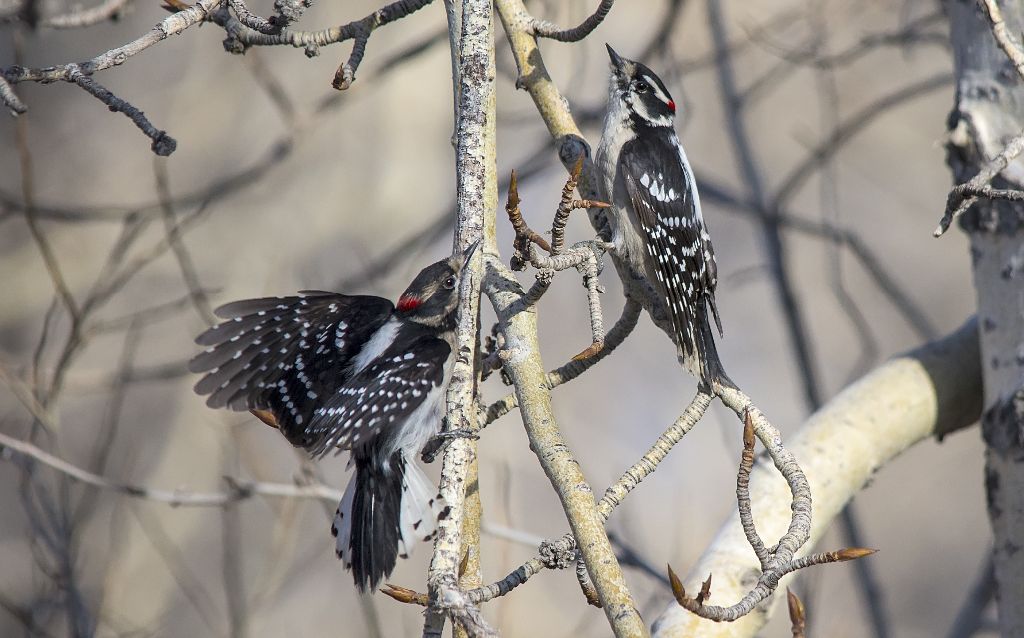
Downy Woodpeckers displaying
Carburn Park – April 20, 2014
Pentax K-5 + Sigma 150-500@500mm
1/2000sec., ƒ/6.3, ISO 800
We headed up the river, seeing a few Tree Swallows, a few Ring-billed and Franklin’s Gulls, and even heard a lone Song Sparrow calling from across the river before we headed back into the denser foliage. Most interestingly though was a little spot we had found on Thursday which was host to half a dozen Ruby-crowned Kinglets was still holding one little one singing away while the sun shone bright…. unlike Thursday, which was cloudy, gloomy and rather snowy!
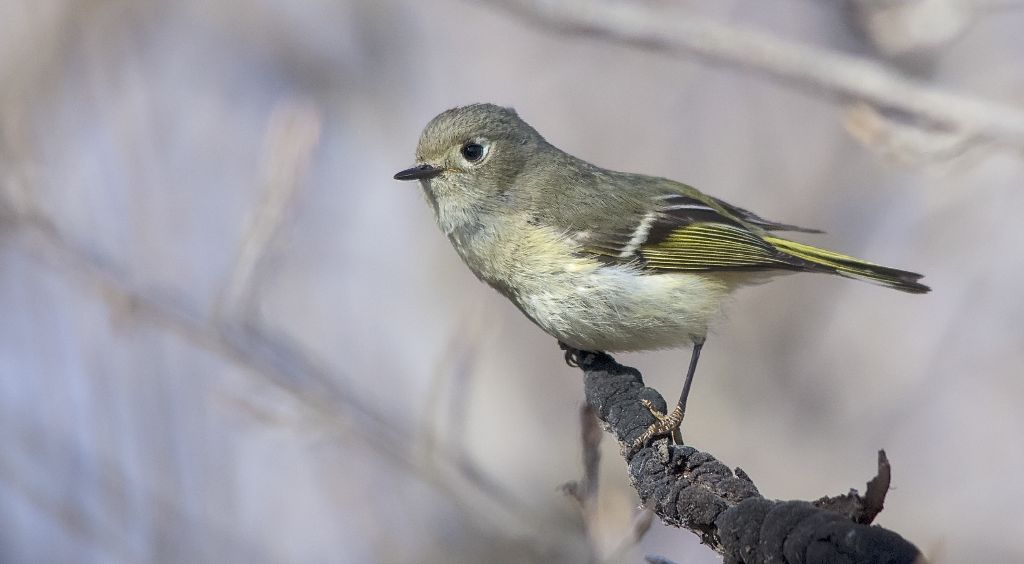
Ruby-crowned Kinglet
Carburn Park – April 20, 2014
Pentax K-5 + Sigma 150-500@500mm
1/1600sec., ƒ/6.3, ISO 1250
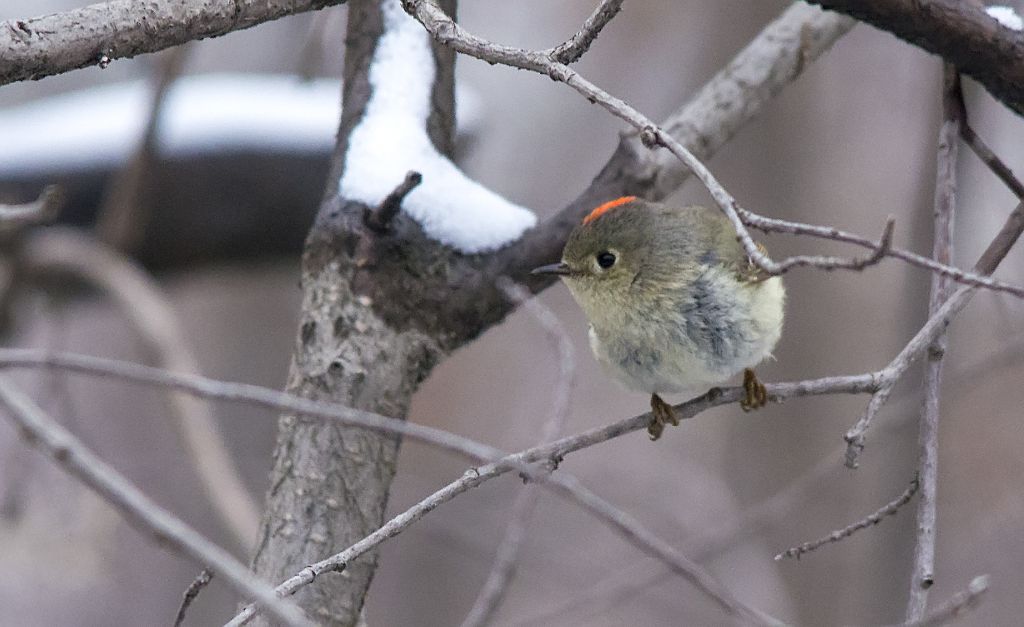
Ruby-crowned Kinglet
Carburn Park – April 17, 2014
Pentax K-5 + Sigma 150-500@500mm
1/800sec., ƒ/6.3, ISO 3200
Up on the north end of the park we saw the local nesting pair of Bald Eagles in the distance, and both days it appeared that the female was still on the nest, brooding her eggs, while dad hunted for dinner.
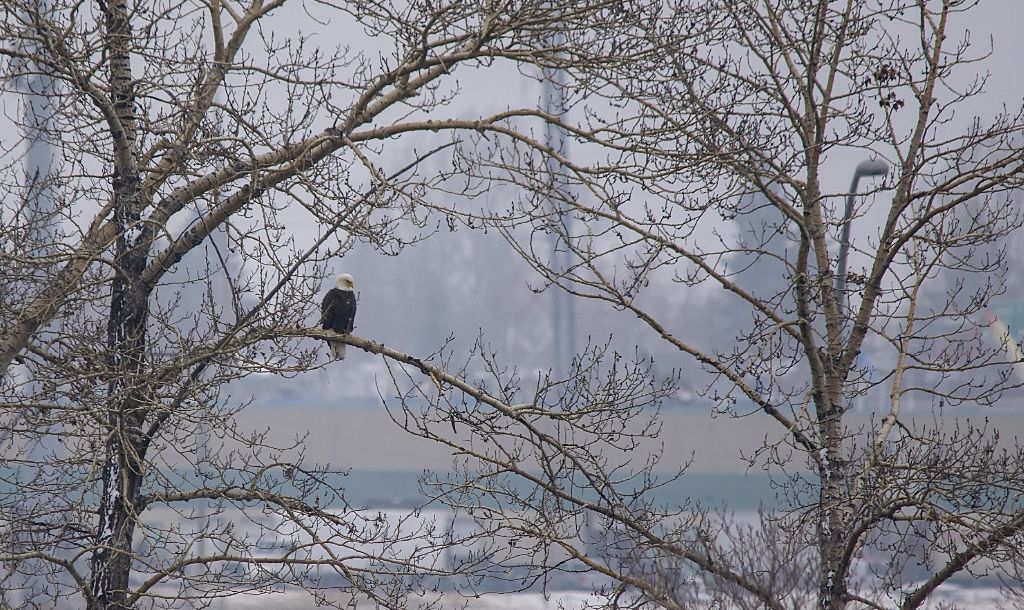
Bald Eagle near nest
Carburn Park – April 17, 2014
Pentax K-5 + Sigma 150-500@500mm
1/800sec., ƒ/6.3, ISO 500
The real highlight of the trip on Thursday though was seeing this flock of nearly a hundred swallows, both Violet-green (look for the ones with the white rump band above the tail) and Tree Swallows (all the rest of them, with the bluish-black backs) flying low over the river chowing down on their lunch of freshly hatched insects. While I had initially guessed that we had seen about four or five Violet-green Swallows, looking back over at my photos I was able to find at least 10 individuals, the largest number of that species I’ve seen in Calgary at once!
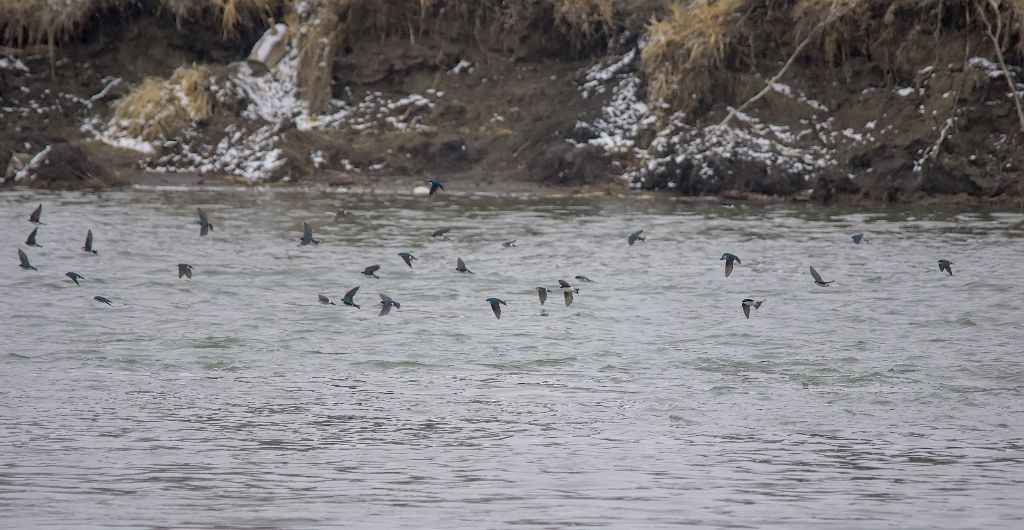
Violet-green and Tree Swallows
Carburn Park – April 17, 2014
Pentax K-5 + Sigma 150-500@500mm
1/800sec., ƒ/6.3, ISO 400
Of course, they weren’t there in any great numbers on Sunday, which was much warmer, and much nicer weather, but there was a beautiful Mourning Cloak butterfly, my first of the season, sunning itself near the second of the large ponds. It was a great end to a great day!
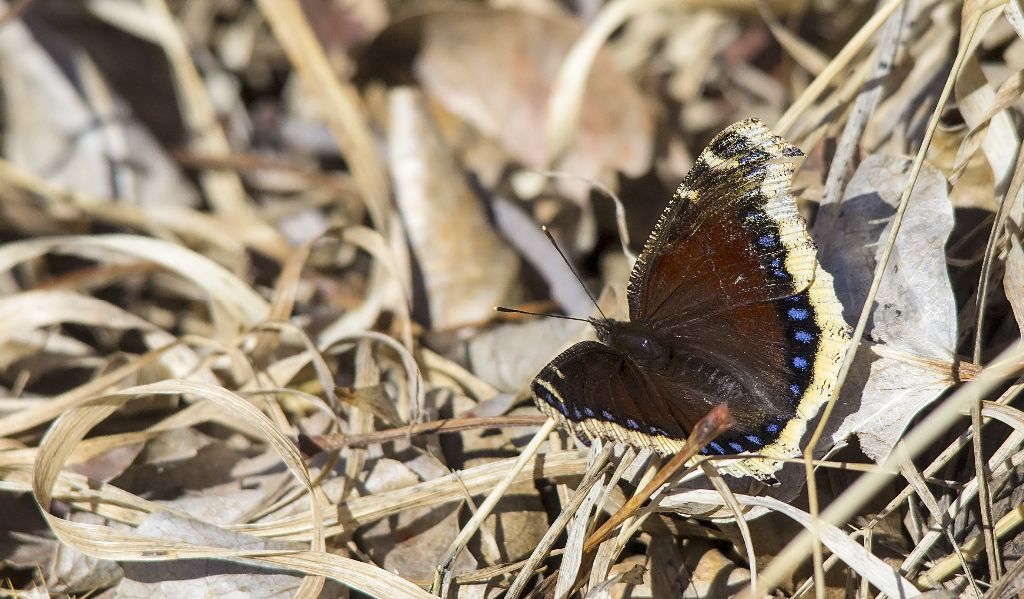
Mourning Cloak butterfly
Carburn Park – April 20, 2014
Pentax K-5 + Sigma 150-500@500mm
1/1600sec., ƒ/6.3, ISO 1000
Thanks again for reading, and good birding!
Posted by Dan Arndt
Paul Turbitt of Turbo’s Track and Photo Tour sent in some photos one a rare encounter he had with one of the harder to find mustelids that are native to our fine province. Both the text and photos below have been provided by him.
On a run with a client from New York this January we were treated to 10 minutes with a Pine Marten, only my second sighting in my life. These are tremendous little critters and as a member of the weasel family they are quite the hunters. We spotted it scurrying across the road in the middle of the day. We found it in the trees, where they spend much of their time.
It seemed not too bothered by us walking around beneath him trying to get better angles with few branches in the way.
There is no question that these are predators, just look at that the size of the ears in comparison to the size of the head.
One of the distinguishing markings of these tree loving weasels is their chest patches which are typically lighter than their backs and chests. The colouration can run anywhere from near white to a deep buttery yellow colour.
These weasels will travel for miles never touching the ground. They are as “at home” in the trees as squirrels.
Despite their ferocious nature they are beautiful critters to spend time with. I would hope that all that search this little hunter out get to spend some time with one.
Tony LePrieur took the photos below on March 1, 2014.
Horned Lark, from outside the city.
Gray Partridge, from outside the city.
A very cold Common Goldeneye from Fish Creek Park.
Brown Creeper, Weaselhead.
Pileated Woodpecker female, Weaselhead.
House Finch male, Weaselhead.
Golden-crowned Kinglet, Weaselhead.
Golden-crowned Kinglet, Weaselhead.
Coyote, Weaselhead.
Finally, an ID challenge: At first glance I assumed this bird was a Merlin, but something didn’t quite look right. If not a Merlin, what do you think it is, and why?